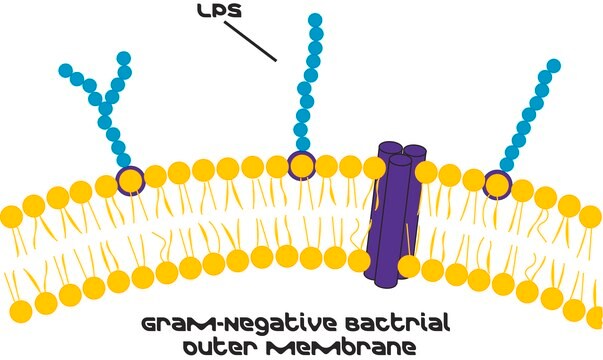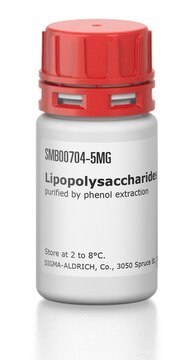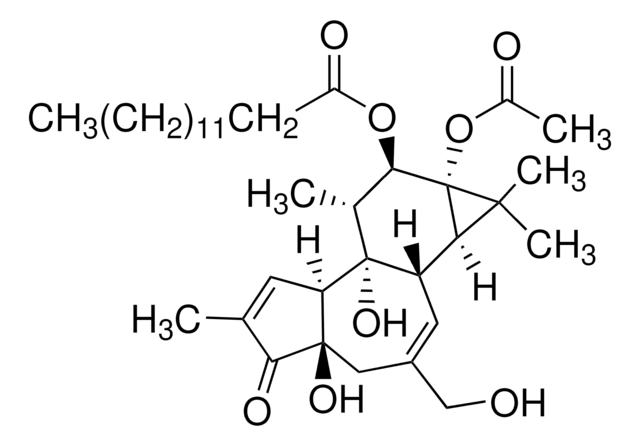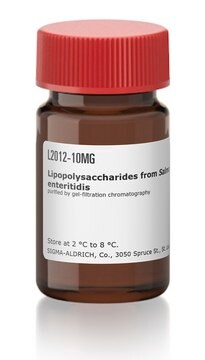추천 제품
생물학적 소스
Pseudomonas aeruginosa (10)
Quality Level
양식
lyophilized powder
정제법
gel-filtration chromatography
불순물
<3% Protein (Lowry)
색상
white to faint yellow
solubility
water: 4.90-5.10 mg/mL, cloudy to hazy, colorless to faintly yellow
저장 온도
2-8°C
유사한 제품을 찾으십니까? 방문 제품 비교 안내
애플리케이션
Lipopolysaccharides (LPSs) are characteristic components of the cell wall of Gram-negative bacteria. LPS and its lipid A moiety stimulate cells of the innate immune system by the Toll-like receptor 4 (TLR4), a member of the Toll-like receptor protein family, which recognizes common pathogen-associated molecular-patterns (PAMPs).
Lipopolysaccharides from Pseudomonas aeruginosa 10 has been used as an inflammatory mediator in cells.
기타 정보
To gain a comprehensive understanding of our extensive range of Lipopolysaccharides for your research, we encourage you to visit our Carbohydrates Category page.
Storage Class Code
11 - Combustible Solids
WGK
WGK 3
Flash Point (°F)
Not applicable
Flash Point (°C)
Not applicable
개인 보호 장비
Eyeshields, Gloves, type N95 (US)
이미 열람한 고객
Coordinate induction of two antibiotic genes in tracheal epithelial cells exposed to the inflammatory mediators lipopolysaccharide and tumor necrosis factor alpha.
Russell JP
Infection and Immunity, 64, 1565-1565 (1996)
Clara cells attenuate the inflammatory response through regulation of macrophage behavior.
Snyder JC
American Journal of Respiratory Cell and Molecular Biology, 42, 161-171 (2010)
Sandra Chang et al.
PloS one, 10(7), e0131810-e0131810 (2015-07-07)
Oxidant production from DUOX1 has been proposed to lead to neutrophil recruitment into the airways when lung homeostasis is compromised. The objective of this study was to determine whether DUOX-derived hydrogen peroxide is required for LPS-induced neutrophil recruitment, using a
Macrophages directly contribute to the exaggerated inflammatory response in cystic fibrosis transmembrane conductance regulator-/- mice.
Bruscia EM
American Journal of Respiratory Cell and Molecular Biology, 40, 295-295 (2009)
Austin Boucher et al.
Journal of immunology (Baltimore, Md. : 1950), 206(3), 540-553 (2020-12-18)
Macrophages are critical for regulating inflammatory responses. Environmental signals polarize macrophages to either a proinflammatory (M1) state or an anti-inflammatory (M2) state. We observed that the microRNA (miRNA) cluster mirn23a, coding for miRs-23a, -27a, and -24-2, regulates mouse macrophage polarization.
자사의 과학자팀은 생명 과학, 재료 과학, 화학 합성, 크로마토그래피, 분석 및 기타 많은 영역을 포함한 모든 과학 분야에 경험이 있습니다..
고객지원팀으로 연락바랍니다.


